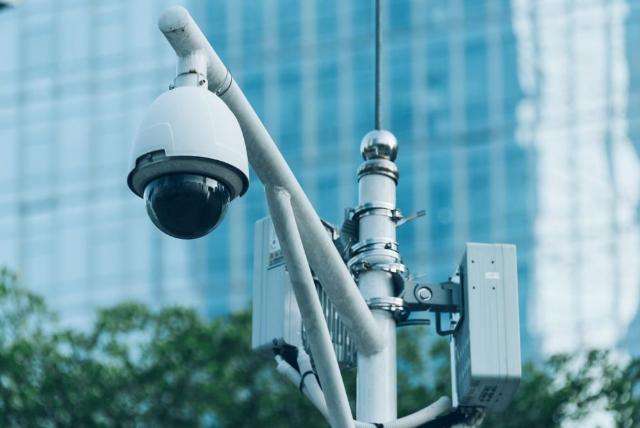Why Live Traffic Cameras Are Crucial for Road Safety?
Did you know that traffic cameras reduce serious crashes by 15 to 30% in areas where they are used? That is thousands of lives saved every year, all thanks to these small but powerful devices watching over our roads. Nowadays, road safety is more important than ever. Traffic cameras are now key tools for preventing accidents, easing traffic jams, and helping truckers plan their routes.
Let’s take a closer look at why traffic cameras are so important for keeping our roads safe and efficient.
1. Preventing Accidents and Enhancing Public Safety
Traffic cameras are a critical tool for preventing accidents before they happen. By continuously monitoring traffic, these cameras can spot dangerous behaviors like speeding, sudden lane changes, or cars slowing down too quickly.
For example, studies show that speed-check cameras cut injury crashes by up to 40%. Red-light cameras also reduce deadly right-angle collisions by up to 25%. Systems like California traffic cameras have been particularly effective in urban areas, where intersections are often high-risk zones. By addressing potential dangers early, these cameras help protect drivers, passengers, and pedestrians, making our roads safer for everyone.
2. Supporting Law Enforcement and Crime Prevention
Traffic cameras play a key role in supporting law enforcement and deterring criminal activity on the roads. They capture evidence of violations like speeding, running red lights, or illegal turns, ensuring that drivers follow the rules. This accountability discourages reckless behavior and fosters a culture of responsibility.
According to the Insurance Institute for Highway Safety, red-light cameras reduce deadly crashes caused by running red lights by 21%. Speed-check cameras cut speeding incidents by up to 60% in monitored areas. Beyond traffic violations, these cameras also help solve crimes. For instance, footage from Texas DOT cameras has been used to track down hit-and-run drivers, stolen vehicles, and even suspects in broader criminal investigations. This makes traffic cameras an essential part of modern public safety systems.
3. Helping Truckers Stay Safe and Secure
For truckers and other professional drivers, live traffic cameras are a lifeline. These cameras provide real-time updates about road conditions, weather, and potential hazards, allowing truckers to make informed decisions about their routes.
Imagine a trucker hauling goods through snowy mountains in Utah. With live feeds from road-monitoring systems in the state, they can check if the roads are icy, flooded, or blocked. This helps them avoid dangerous areas and find safer routes. Cameras on highways and mountain passes also warn drivers about steep slopes, sharp turns, or bad weather like fog or heavy rain.
This real-time information is especially important for truckers, who often carry valuable or hazardous materials. By using Utah road cameras, they can ensure their safety and protect their cargo, even in tough conditions. This adds an extra layer of security for both drivers and the communities they pass through.
4. Reducing Traffic Jams and Improving Emergency Response
We have all been stuck in traffic, wondering why it is taking so long to move. Traffic cameras help solve this problem by giving operators real-time data to manage traffic flow. They can adjust traffic lights, close lanes when needed, and suggest alternate routes during busy times or unexpected delays.
In cities with smart traffic systems powered by cameras, travel times have improved by up to 25%. Emissions have also dropped by 10 to 15% because cars spend less time idling. For example, during rush hour in California, operators use advanced camera networks to tweak traffic light timings or reroute vehicles to less crowded areas. This not only saves time but also reduces the chances of accidents caused by impatient drivers.
Traffic cameras also play a crucial role in emergencies. They provide live video feeds that let first responders assess situations quickly and accurately. Dispatchers can see exactly where the problem is, how bad it is, and what needs to be done. In cities with advanced camera systems, emergency response times have improved by up to 30%.
For instance, if there is a multi-car crash on a busy highway, cameras guide emergency teams to the scene faster while managing traffic around the area. This ensures quicker responses and better outcomes for everyone involved.
5. Collecting Data for Smarter and Safer Cities
Beyond their immediate impact, traffic cameras provide valuable data that helps cities improve road safety in the long run. Information about traffic volumes, speeds, and patterns is studied to find trends and make smarter decisions.
For example, data from traffic cameras shows that 80% of accidents happen at intersections. This helps authorities focus on redesigning risky areas. If a road often has speeding or congestion, authorities can use this data to add speed checks, widen lanes, or put up better signs. Understanding traffic patterns helps cities build smarter roads that work better for everyone.
This data also supports broader smart city initiatives, where traffic cameras are integrated with other technologies like smart streetlights, parking sensors, and public transit systems. Together, these tools create a network that enhances public safety, reduces crime, and improves overall quality of life. For instance, systems similar to those used by the Texas Department of Transportation are already being used to optimize transportation networks and improve urban planning.
The Future of Traffic Cameras in Security and Safety
As technology gets better, traffic cameras will become even more important for road security and public safety. AI-powered systems are already being used to analyze traffic patterns, predict congestion, and offer real-time solutions. For example, predictive analytics can warn operators about traffic jams up to 30 minutes before they happen, giving them time to act.
For truckers, the future looks promising too. New advances in live road cameras will give clearer visuals, better weather updates, and integration with GPS systems to help drivers find the best routes. This will make long hauls safer and less stressful while adding an extra layer of security for drivers and their cargo.
Stay safe, stay informed, and drive responsibly.

